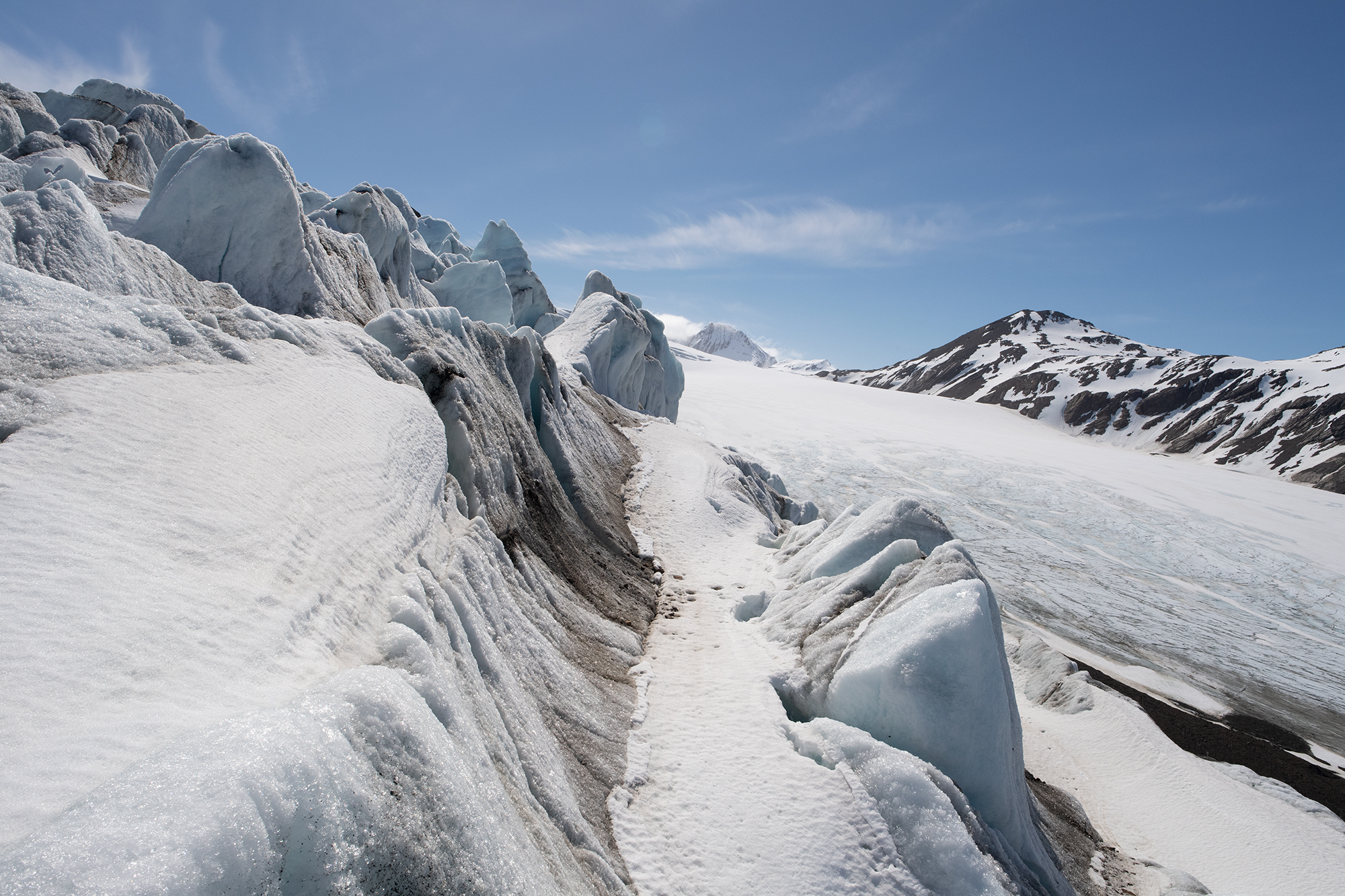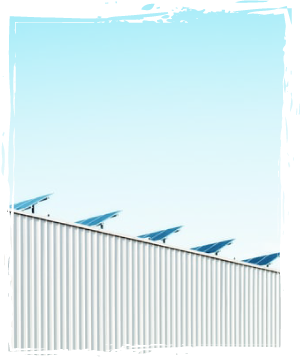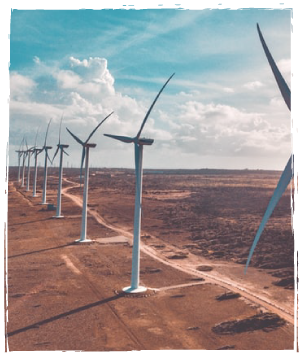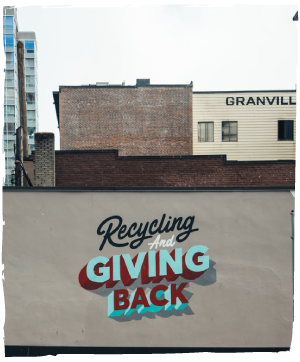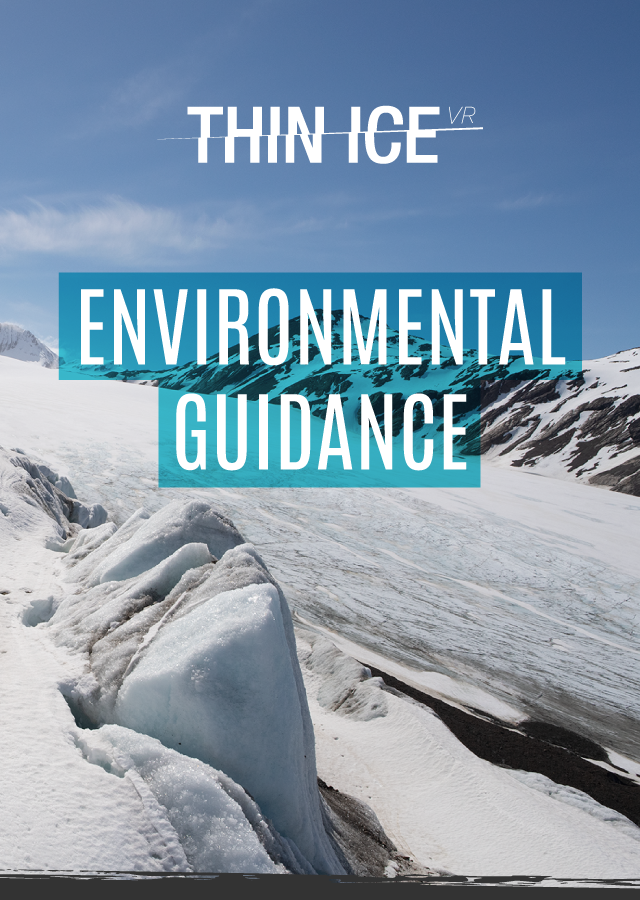
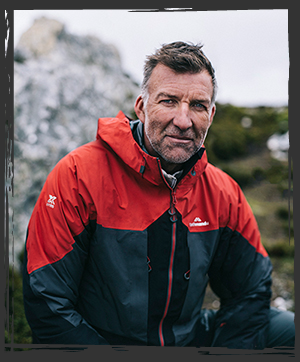
Introduction
Tim Jarvis AM is an environmental scientist, author, adventurer, public speaker, and the man who recreated Shackleton’s famous expedition from coast to coast across the Antarctic.
He is also committed to finding pragmatic solutions to major environmental issues related to climate change and biodiversity loss.
Climate change and biodiversity loss are two of the biggest issues facing us. The good news is that everyone has a role to play in combatting them, as you can discover from Tim’s simple tips and steps towards building a brighter and better future.
As Anita Roddick (former CEO of the Body Shop) famously said “if you think ‘small’ can’t make a difference, try going to bed with a mosquito in the room”.

Introduction
Tim Jarvis AM is an environmental scientist, author, adventurer, public speaker, and the man who recreated Shackleton’s famous expedition from coast to coast across the Antarctic.
He is also committed to finding pragmatic solutions to major environmental issues related to climate change and biodiversity loss.
Climate change and biodiversity loss are two of the biggest issues facing us. The good news is that everyone has a role to play in combatting them, as you can discover from Tim’s simple tips and steps towards building a brighter and better future.
As Anita Roddick (former CEO of the Body Shop) famously said “if you think ‘small’ can’t make a difference, try going to bed with a mosquito in the room”.

what can you do?
There are lots of things we can do to play our part in reducing landfill waste, reducing our carbon emissions and preservation to benefit our natural environment and finances;
Starting at home, in businesses of all sizes, right up to government organisations. It’s up to us to make sure it happens.
If you’re doing things at work, get the whole team involved. If you’re doing things at home, make sure you involve the whole family.
The advantage of doing things at home is that it also gets children involved. This is really important as it will become second nature to them, as the ones who inherit this place when we’re gone.

Select a category below for tips about what you can do:

what can you do?
There are lots of things we can do to play our part in reducing landfill waste, reducing our carbon emissions and preservation to benefit our natural environment and finances;
Starting at home, in businesses of all sizes, right up to government organisations. It’s up to us to make sure it happens.
If you’re doing things at work, get the whole team involved. If you’re doing things at home, make sure you involve the whole family.
The advantage of doing things at home is that it also gets children involved. This is really important as it will become second nature to them, as the ones who inherit this place when we’re gone.

some areas to work on
Click on the categories below to see some recommendations of how you can get involved.
Energy & Waste
Energy & Waste

Electricity usage
Electricity use is one of the largest parts of overall environmental impact. In fact, more than 30% of a country’s carbon emissions typically come from the electricity homes and office buildings use.
– – –
Consume less power at home
Better insulate your home and try not to set the thermostat less than 8°C below the outdoor temperature. Setting your air conditioning unit one degree warmer than you normally world can cut costs by up to 10%. In terms of warming, wear a jumper and don’t set the temperature higher than needed.
– – –
Energy efficiency
Energy efficiency is the lowest-cost way to reduce emissions. Electrical appliances are large users of electricity in the home. When an appliance needs replacement, ensure you look for the Energy Star rating https://www.energyrating.gov.au/ to see which are the most efficient. Since energy efficient appliances were first introduced in the US in 1987, they have kept 2.3 billion tons of carbon dioxide out of the air. That’s about the same amount as the annual carbon pollution produced by nearly 440 million cars.
– – –
Solar panels
Generate your own power by installing solar panels and rainwater tanks for your home. The return on investment for solar panels is surprisingly quick, taking as little as 2 years. Rainwater tanks have the benefit of saving us needing to get our water from the natural environment such as rivers and lakes.
– – –
Use less water
This not only helps our rivers but reduces carbon pollution too. It takes a lot of energy to pump, heat and treat water. A significant fraction of a country’s electricity use goes into pumping and treating water, so having the water in your own tanks reduces the need for this. Take shorter showers, turn off the tap while brushing your teeth and switch to water-efficient fixtures and appliances.
– – –
Green power
For any power you do use, choose Green Power – contact your electricity provider to arrange for all the electricity to come from a renewable energy source. The energy provider will ensure that the amount of energy you consume will all come from renewables. https://www.greenpower.gov.au/
– – –
On standby
Fridges use the most power in your home, followed by things left on Standby. Standby is also known as “Vampire power” which works behind the scenes to consume energy even when your appliances are turned off. According to the US Department of Industry, Innovation and Science, standby power consumption costs the average household a huge amount per year.
– – –
Consume less!
Energy-related emissions from manufacturing including mining & quarrying, steel, oil & gas, construction, textiles, electronics, paper, wood products, and vehicles (such as car manufacturing) are responsible for about a quarter of global carbon emissions. This energy is used to generate the vast amount of stuff we all consume, much of which we don’t need. Australians personally throw away over half a tonne of household waste per person each year. As a result, the country is generating nearly 70 million tonnes of waste – much if it from products that haven’t yet reached end of life, of which only a third is recycled.
– – –
Re-use & recycle
Re-use and recycle everything you can. Reducing what we consume means less power and raw materials being needed to produce new things as well as reducing what gets thrown away. It takes 2,600 litres of water to make a t-shirt (and a lot of power), and Australians throw away 6 tonnes of clothes every 10 minutes to landfill! Rubbish in landfill produces methane emissions; a potent greenhouse gas 20 times worse than CO2.

Electricity usage
Electricity use is one of the largest parts of overall environmental impact. In fact, more than 30% of a country’s carbon emissions typically come from the electricity homes and office buildings use.
– – –
Consume less power at home
Better insulate your home and try not to set the thermostat less than 8°C below the outdoor temperature. Setting your air conditioning unit one degree warmer than you normally world can cut costs by up to 10%. In terms of warming, wear a jumper and don’t set the temperature higher than needed.
Energy efficiency
Energy efficiency is the lowest-cost way to reduce emissions. Electrical appliances are large users of electricity in the home. When an appliance needs replacement, ensure you look for the Energy Star rating https://www.energyrating.gov.au/ to see which are the most efficient. Since energy efficient appliances were first introduced in the US in 1987, they have kept 2.3 billion tons of carbon dioxide out of the air. That’s about the same amount as the annual carbon pollution produced by nearly 440 million cars.
– – –
Solar panels
Generate your own power by installing solar panels and rainwater tanks for your home. The return on investment for solar panels is surprisingly quick, taking as little as 2 years. Rainwater tanks have the benefit of saving us needing to get our water from the natural environment such as rivers and lakes.
– – –
Use less water
This not only helps our rivers but reduces carbon pollution too. It takes a lot of energy to pump, heat and treat water. A significant fraction of a country’s electricity use goes into pumping and treating water, so having the water in your own tanks reduces the need for this. Take shorter showers, turn off the tap while brushing your teeth and switch to water-efficient fixtures and appliances.
– – –
Green power
For any power you do use, choose Green Power – contact your electricity provider to arrange for all the electricity to come from a renewable energy source. The energy provider will ensure that the amount of energy you consume will all come from renewables. https://www.greenpower.gov.au/
On standby
Fridges use the most power in your home, followed by things left on Standby. Standby is also known as “Vampire power” which works behind the scenes to consume energy even when your appliances are turned off. According to the US Department of Industry, Innovation and Science, standby power consumption costs the average household a huge amount per year.
– – –
Consume less!
Energy-related emissions from manufacturing including mining & quarrying, steel, oil & gas, construction, textiles, electronics, paper, wood products, and vehicles (such as car manufacturing) are responsible for about a quarter of global carbon emissions. This energy is used to generate the vast amount of stuff we all consume, much of which we don’t need. Australians personally throw away over half a tonne of household waste per person each year. As a result, the country is generating nearly 70 million tonnes of waste – much if it from products that haven’t yet reached end of life, of which only a third is recycled.
– – –
Re-use & recycle
Re-use and recycle everything you can. Reducing what we consume means less power and raw materials being needed to produce new things as well as reducing what gets thrown away. It takes 2,600 litres of water to make a t-shirt (and a lot of power), and Australians throw away 6 tonnes of clothes every 10 minutes to landfill! Rubbish in landfill produces methane emissions; a potent greenhouse gas 20 times worse than CO2.
Transport

Transport is the second biggest contributor to carbon emissions after energy, coming in at around 16% globally. Do your part in reducing by cycling, walking, taking public transport or car sharing to get to work. Try and fly less for business, and when it’s unavoidable, get carbon offsets for all your flights. They only add a tiny amount – perhaps 1% onto the price of your ticket. Take a look here for more information on the best ones on offer https://www.treehugger.com/best-carbon-offset-programs-5076458.
In the United States, just under 27% of all energy used in the nation is for transportation, with all but a small amount coming from petrol & diesel. By reducing the amount of energy you use for transportation, you’ll do your part to lower carbon emissions. Don’t forget electric vehicles (EV), which cost very little to run once you have incurred the initial costs of purchasing one. At present, costs of an EV are still higher than a fossil-fuel equivalent car, but this is starting to change. Sales of electric cars, which accounted for 2.6% of global car sales and about 1% of global car stock in 2019, registered a 40% year-on-year increase. This trend will only continue.

Transport
Transport is the second biggest contributor to carbon emissions after energy, coming in at around 16% globally. Do your part in reducing by cycling, walking, taking public transport or car sharing to get to work. Try and fly less for business, and when it’s unavoidable, get carbon offsets for all your flights. They only add a tiny amount – perhaps 1% onto the price of your ticket. Take a look here for more information on the best ones on offer https://www.treehugger.com/best-carbon-offset-programs-5076458.
In the United States, just under 27% of all energy used in the nation is for transportation, with all but a small amount coming from petrol & diesel. By reducing the amount of energy you use for transportation, you’ll do your part to lower carbon emissions. Don’t forget electric vehicles (EV), which cost very little to run once you have incurred the initial costs of purchasing one. At present, costs of an EV are still higher than a fossil-fuel equivalent car, but this is starting to change. Sales of electric cars, which accounted for 2.6% of global car sales and about 1% of global car stock in 2019, registered a 40% year-on-year increase. This trend will only continue.
Eat well
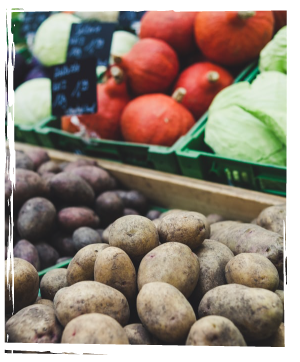
Agriculture and transport are similar in terms of global emissions. This comes from a combination of things; including land clearance, emissions from animals, crop burning and fertiliser application. Did you know 50% of the world’s habitable land is given over to agriculture and 75% of agricultural land is either grazing land for animals or given over to growing food for these animals.
– – –
Only buy what you will eat, buy less meat and utilise leftovers Approximately 10 percent of U.S. energy use goes into growing, processing, packaging and shipping food—about 40 percent of which ends up in landfill. The more you can make your diet plant-based, the healthier it is for you, animals and the planet. A vegan diet produces the equivalent of 1.5 tons of CO2 emissions each year, a vegetarian diet produces 1.7 tons, while an average omnivorous diet, including all types of meat, comes in at 2.5 tons annually, due to animals grazing on land that could be better used to grow crops.
Avoid Palm Oil! Many everyday products like biscuits, soap, bread and shampoo contain palm oil, with rainforests being destroyed, just to plant oil palm. If you can’t avoid and need things that contain it, ensure it comes from sustainable sources: http://www.deforestationeducation.com/bar-code-scanner-app.php
– – –
Make sustainable food purchases, choose products with minimal impact on the environment and that avoid damage to natural habitat and minimize the use of herbicides, pesticides and water. There are many useful websites and organization offering guidance on this: https://sustainabletable.org.au/ http://www.sustainablefood.com/guide/
– – –
Buy locally produced food and drinks that haven’t travelled hundreds or sometimes thousands of kilometres to reach your plate. Approximately 10% of US energy use goes into growing, processing, packaging, and shipping food — and about 40% of this ends up in landfill.

Eat well
Agriculture and transport are similar in terms of global emissions. This comes from a combination of things; including land clearance, emissions from animals, crop burning and fertiliser application. Did you know 50% of the world’s habitable land is given over to agriculture and 75% of agricultural land is either grazing land for animals or given over to growing food for these animals.
– – –
Only buy what you will eat, buy less meat and utilise leftovers Approximately 10 percent of U.S. energy use goes into growing, processing, packaging and shipping food—about 40 percent of which ends up in landfill. The more you can make your diet plant-based, the healthier it is for you, animals and the planet. A vegan diet produces the equivalent of 1.5 tons of CO2 emissions each year, a vegetarian diet produces 1.7 tons, while an average omnivorous diet, including all types of meat, comes in at 2.5 tons annually, due to animals grazing on land that could be better used to grow crops.
Avoid Palm Oil! Many everyday products like biscuits, soap, bread and shampoo contain palm oil, with rainforests being destroyed, just to plant oil palm. If you can’t avoid and need things that contain it, ensure it comes from sustainable sources: http://www.deforestationeducation.com/bar-code-scanner-app.php
– – –
Make sustainable food purchases, choose products with minimal impact on the environment and that avoid damage to natural habitat and minimize the use of herbicides, pesticides and water. There are many useful websites and organization offering guidance on this: https://sustainabletable.org.au/ http://www.sustainablefood.com/guide/
– – –
Buy locally produced food and drinks that haven’t travelled hundreds or sometimes thousands of kilometres to reach your plate. Approximately 10% of US energy use goes into growing, processing, packaging, and shipping food — and about 40% of this ends up in landfill.
Invest responsibly
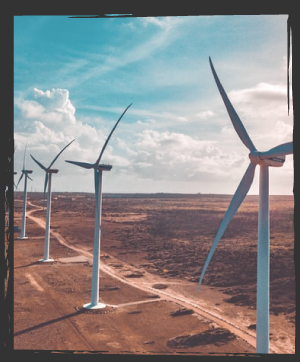
Earn a better return on your investment whilst saving the world by putting some or all of your pension or Superannuation in an ethical fund that doesn’t invest in environmentally damaging activities.
Internationally, the United Nations has so far amassed US$9 billion in its Green Climate Fund, which is a fund contributed to by all countries to tackle climate change. The value of Australian superannuation funds is however over US$2 trillion. Put another way, Australian superannuation funds have more than 200 times the purchasing power of the Green Climate Fund. Invested the right way this can be very powerful, with he corporate sector having a huge role to play.

Invest responsibly
Earn a better return on your investment whilst saving the world by putting some or all of your pension or Superannuation in an ethical fund that doesn’t invest in environmentally damaging activities.
Internationally, the United Nations has so far amassed US$9 billion in its Green Climate Fund, which is a fund contributed to by all countries to tackle climate change. The value of Australian superannuation funds is however over US$2 trillion. Put another way, Australian superannuation funds have more than 200 times the purchasing power of the Green Climate Fund. Invested the right way this can be very powerful, with he corporate sector having a huge role to play.
Consume less & better
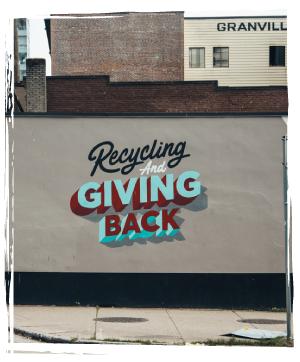
Buy experiences not things! By recycling, reusing and reducing what we send to landfill we use less power and raw materials needing to be found to make new things. Australia generated 67 million tonnes of waste in 2016-2017. That’s 2.7 tonnes, per person, per year — roughly the weight of an African forest elephant. While a lot of the focus is on households, more than a third of our waste comes from the construction and demolition industry, and the same amount comes from the commercial and industrial sector.
Use less plastic – Millions of tonnes of plastic can be found in swirling convergences making up about 40% of the world’s ocean surfaces. Every year thousands of seabirds, sea turtles, seals and other marine mammals are killed after ingesting plastic or getting tangled up in it. You can start cutting down on your plastic waste in a few simple steps: use reusable bags, ditch single-use water bottles and straws and avoid products made from or packaged in plastic whenever possible.

Consume less & better
Buy experiences not things! By recycling, reusing and reducing what we send to landfill we use less power and raw materials needing to be found to make new things. Australia generated 67 million tonnes of waste in 2016-2017. That’s 2.7 tonnes, per person, per year — roughly the weight of an African forest elephant. While a lot of the focus is on households, more than a third of our waste comes from the construction and demolition industry, and the same amount comes from the commercial and industrial sector.
Use less plastic – Millions of tonnes of plastic can be found in swirling convergences making up about 40% of the world’s ocean surfaces. Every year thousands of seabirds, sea turtles, seals and other marine mammals are killed after ingesting plastic or getting tangled up in it. You can start cutting down on your plastic waste in a few simple steps: use reusable bags, ditch single-use water bottles and straws and avoid products made from or packaged in plastic whenever possible.
get involved

Look into local sustainability projects that you can get involved with. There are many great initiatives that you can support and most rely on the help of volunteers and offering pro bono professional help.
Take a look at the Australian groups www.dosomething.org and https://dosomethingnearyou.com.au/

get involved
Look into local sustainability projects that you can get involved with. There are many great initiatives that you can support and most rely on the help of volunteers and offering pro bono professional help.
Take a look at the Australian groups www.dosomething.org and https://dosomethingnearyou.com.au/
vote
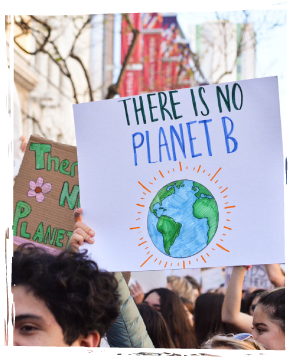
Remember to exercise your democratic right and vote. Research the difference between candidates and party stances on environmental issues at both the local level and national and vote for candidates with strong environmental platforms. One of the best things you can do for wildlife and the planet, today and for the future, is to get politically involved in your community and at the national level. Urge your representatives to pass stronger policies to limit greenhouse gases, fight climate change, and protect our wildlife and native vegetation.
“If we don’t vote, we are ignoring history and giving away the future.” – Pat Mitchell

vote
Remember to exercise your democratic right and vote. Research the difference between candidates and party stances on environmental issues at both the local level and national and vote for candidates with strong environmental platforms. One of the best things you can do for wildlife and the planet, today and for the future, is to get politically involved in your community and at the national level. Urge your representatives to pass stronger policies to limit greenhouse gases, fight climate change, and protect our wildlife and native vegetation.
“If we don’t vote, we are ignoring history and giving away the future.” – Pat Mitchell

